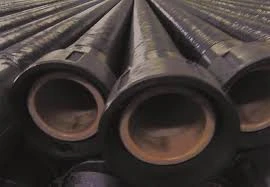
-
 Afrikaans
Afrikaans -
 Albanian
Albanian -
 Amharic
Amharic -
 Arabic
Arabic -
 Armenian
Armenian -
 Azerbaijani
Azerbaijani -
 Basque
Basque -
 Belarusian
Belarusian -
 Bengali
Bengali -
 Bosnian
Bosnian -
 Bulgarian
Bulgarian -
 Catalan
Catalan -
 Cebuano
Cebuano -
 China
China -
 China (Taiwan)
China (Taiwan) -
 Corsican
Corsican -
 Croatian
Croatian -
 Czech
Czech -
 Danish
Danish -
 Dutch
Dutch -
 English
English -
 Esperanto
Esperanto -
 Estonian
Estonian -
 Finnish
Finnish -
 French
French -
 Frisian
Frisian -
 Galician
Galician -
 Georgian
Georgian -
 German
German -
 Greek
Greek -
 Gujarati
Gujarati -
 Haitian Creole
Haitian Creole -
 hausa
hausa -
 hawaiian
hawaiian -
 Hebrew
Hebrew -
 Hindi
Hindi -
 Miao
Miao -
 Hungarian
Hungarian -
 Icelandic
Icelandic -
 igbo
igbo -
 Indonesian
Indonesian -
 irish
irish -
 Italian
Italian -
 Japanese
Japanese -
 Javanese
Javanese -
 Kannada
Kannada -
 kazakh
kazakh -
 Khmer
Khmer -
 Rwandese
Rwandese -
 Korean
Korean -
 Kurdish
Kurdish -
 Kyrgyz
Kyrgyz -
 Lao
Lao -
 Latin
Latin -
 Latvian
Latvian -
 Lithuanian
Lithuanian -
 Luxembourgish
Luxembourgish -
 Macedonian
Macedonian -
 Malgashi
Malgashi -
 Malay
Malay -
 Malayalam
Malayalam -
 Maltese
Maltese -
 Maori
Maori -
 Marathi
Marathi -
 Mongolian
Mongolian -
 Myanmar
Myanmar -
 Nepali
Nepali -
 Norwegian
Norwegian -
 Norwegian
Norwegian -
 Occitan
Occitan -
 Pashto
Pashto -
 Persian
Persian -
 Polish
Polish -
 Portuguese
Portuguese -
 Punjabi
Punjabi -
 Romanian
Romanian -
 Russian
Russian -
 Samoan
Samoan -
 Scottish Gaelic
Scottish Gaelic -
 Serbian
Serbian -
 Sesotho
Sesotho -
 Shona
Shona -
 Sindhi
Sindhi -
 Sinhala
Sinhala -
 Slovak
Slovak -
 Slovenian
Slovenian -
 Somali
Somali -
 Spanish
Spanish -
 Sundanese
Sundanese -
 Swahili
Swahili -
 Swedish
Swedish -
 Tagalog
Tagalog -
 Tajik
Tajik -
 Tamil
Tamil -
 Tatar
Tatar -
 Telugu
Telugu -
 Thai
Thai -
 Turkish
Turkish -
 Turkmen
Turkmen -
 Ukrainian
Ukrainian -
 Urdu
Urdu -
 Uighur
Uighur -
 Uzbek
Uzbek -
 Vietnamese
Vietnamese -
 Welsh
Welsh -
 Bantu
Bantu -
 Yiddish
Yiddish -
 Yoruba
Yoruba -
 Zulu
Zulu
Understanding Solutions for Corrosion Prevention and Control in Various Environments
Understanding Corrosion and Solutions to Mitigate Its Effects
Corrosion is a natural process that results in the degradation of materials, primarily metals, due to their interaction with the environment. This chemical reaction can lead to significant economic and structural impacts, making the study of corrosion and the development of effective solutions crucial for industries relying on metal structures and components.
Corrosion occurs through various mechanisms, most commonly involving electrochemical reactions. When a metal is exposed to moisture, air, and other environmental elements, it can undergo oxidation, where metal atoms lose electrons, leading to the formation of metal oxides or other compounds. This process not only weakens the structural integrity of the metal but can also create safety hazards. For instance, rust on iron and steel can compromise the strength of critical infrastructure such as bridges, pipelines, and buildings.
The economic implications of corrosion are staggering. The National Association of Corrosion Engineers (NACE) estimates that corrosion costs the U.S. economy over $300 billion annually, impacting industries such as transportation, oil and gas, and construction. These costs encompass not just the repair and replacement of corroded materials but also the downtime and losses in productivity that come from system failures.
Understanding Corrosion and Solutions to Mitigate Its Effects
1. Material Selection The most effective way to mitigate corrosion is through the careful selection of materials. Using corrosion-resistant alloys, such as stainless steel or galvanized steel, can dramatically reduce the likelihood of corrosion. In highly corrosive environments, materials such as titanium or high-performance plastics may be preferred.
corrosion solution

2. Protective Coatings The application of protective coatings is a widely used method to prevent corrosion. These coatings can take various forms, including paint, lacquer, or more advanced treatments such as powder coating, which provides a thick, protective layer. Additionally, corrosion inhibitors can be incorporated into coatings to enhance their performance.
3. Cathodic Protection This technique is particularly effective for protecting underground pipelines and large metal structures. It involves using sacrificial anodes (more active metals) that corrode instead of the protected metal structure. By diverting the electrochemical reactions away from the primary structure, cathodic protection can significantly extend its lifespan.
4. Environmental Control Reducing the exposure of metals to corrosive elements can also mitigate damage. This could involve controlling humidity levels, reducing exposure to saltwater in coastal areas, or ensuring that metals are not in contact with moisture. Regular maintenance and monitoring can also help identify early signs of corrosion, allowing for timely intervention.
5. Regular Inspections and Maintenance Implementing a regular inspection regime can help identify potential corrosion issues before they become severe. Scheduled maintenance, including cleaning, painting, and the application of protective measures, can prolong the life of metal structures and components.
In conclusion, corrosion is an inevitable process that poses significant risks to the integrity and safety of metal structures. However, through careful material selection, protective coatings, cathodic protection, environmental control, and regular maintenance, the effects of corrosion can be effectively managed. Investing in these solutions not only protects assets but also contributes to sustainability by reducing waste and the need for frequent replacements. Understanding corrosion and implementing appropriate solutions is essential for industries to operate safely and efficiently in a world where metal components play a pivotal role.
Latest news
-
Exploring the Benefits of Top Hammer Drifter Rods for Enhanced Drilling PerformanceNewsJun.10,2025
-
High-Precision Fiberglass Winding Machine for GRP/FRP Pipe Production – Reliable & Efficient SolutionsNewsJun.10,2025
-
FRP Pipes & Fittings for Shipbuilding - Corrosion-Resistant & LightweightNewsJun.09,2025
-
Premium FRP Flooring Solutions Durable & Slip-ResistantNewsJun.09,2025
-
Premium Fiberglass Rectangular Tanks Durable & Lightweight SolutionNewsJun.09,2025
-
Tapered Drill String Design Guide Durable Performance & UsesNewsJun.09,2025









